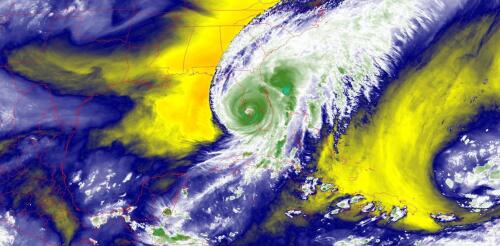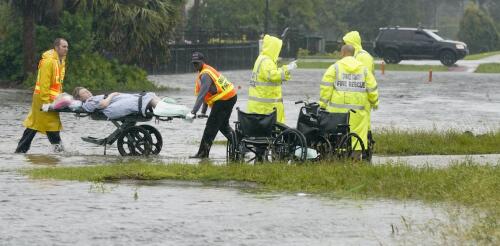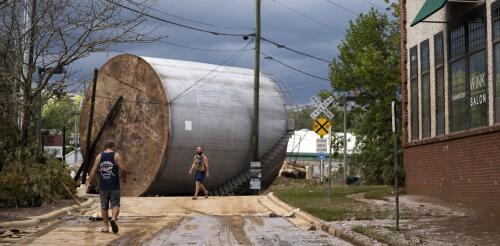Hurricane
Hurricane Ian hit Florida in September 2022 as one of the United States’ most powerful hurricanes on record, and it followed a two-week string of massive, devastating storms around the world. A few days earlier in the Philippines, Typhoon Noru gave new meaning to rapid intensification when it blew up from a tropical storm with 50 mph winds to a Category 5 monster with 155 mph winds the next day. Hurricane Fiona flooded Puerto Rico, then became Canada’s most intense storm on record. Typhoon Merbok gained strength over a warm Pacific Ocean and tore up over 1,000 miles of the Alaska coast. Major storms hit from the Philippines in the western Pacific to the Canary Islands in the eastern Atlantic, to Japan and Florida in the middle latitudes and western Alaska and the Canadian Maritimes in the high latitudes. A lot of people are asking about the role rising global temperatures play in storms like these. It’s not always a simple answer....
Hurricane Ian, one of the most powerful storms to hit the U.S., tore part of the roof off a hospital in Port Charlotte, Florida, and flooded the building’s lower level emergency room, sending staff scrambling to move patients as water poured in. At least nine hospitals and dozens of nursing homes had to transfer patients after losing access to clean water because of the storm. Health care services are essential at any time, but when disasters strike, those services become even more crucial as injuries rise. Yet in many coastal communities, the hospitals were built in locations that are at increasingly high risk of flooding during hurricanes. I study ways to improve disaster communications, including how health care organizations prepare for severe weather events. Here’s what research shows about the rising risks. High percentage of coastal hospitals at risk Given the impact of climate change, many areas are susceptible to severe weather events and hazards. Healt...
As mandatory evacuations for Hurricane Ian began in Florida and the warnings about damaging wind and flooding intensified, I called my aging parents to check in. Being a disaster researcher, my concern for them was already in high gear, even though they weren’t directly in an evacuation zone. My dad takes medications that require refrigeration, special needles and a sterile environment to administer. My mom is in the early stages of dementia. Both are not as spry as they used to be. I heard the worry in their voice about their safety, about my dad’s health needs, and about what might happen to their house. As I sat at home hundreds of miles away, I thought about all the reasons why leaving isn’t always a clear decision. Concerns about health and home security are two reasons older adults might fear evacuating during disasters like Hurricane Harvey in 2017. Scott Olson/Getty Images...
As a hurricane intensifies, hurricane hunters are in the sky doing something almost unimaginable: flying through the center of the storm. With each pass, the scientists aboard these planes take measurements that satellites can’t and send them to forecasters at the National Hurricane Center. Jason Dunion, a University of Miami meteorologist, has led hurricane field programs for the National Oceanic and Atmospheric Administration. He described the technology the team uses to gauge hurricane behavior in real time and the experience aboard a P-3 Orion as it plunges through the eyewall of a hurricane. What happens aboard a hurricane hunter when you fly into a storm? Basically, we’re take a flying laboratory into the heart of the hurricane, all the way up to Category 5s. While we’re flying, we’re crunching data and sending it to forecasters and climate modelers. In the P-3s, we routinely cut through the middle of the storm, right into the eye. Picture an X p...
Hundreds of industrial facilities with toxic pollutants are in Hurricane Milton’s path as it heads toward Florida, less than two weeks after Hurricane Helene flooded communities across the Southeast. Milton, expected to make landfall as a major hurricane late on Oct. 9, is bearing down on boat and spa factories along Florida’s west-central coast, along with the rubber, plastics and fiberglass manufacturers that supply them. Many of these facilities use tens of thousands of registered contaminants each year, including toluene, styrene and other chemicals known to have adverse effects on the central nervous system with prolonged exposure. Farther inland, hundreds more manufacturers that use and house hazardous chemicals onsite lie along the Interstate 4 and Interstate 75 corridors and their feeder roads. And many are in the path of the storm’s intense winds and heavy rainfall. Black dots indicate facilities in EPA’s...



